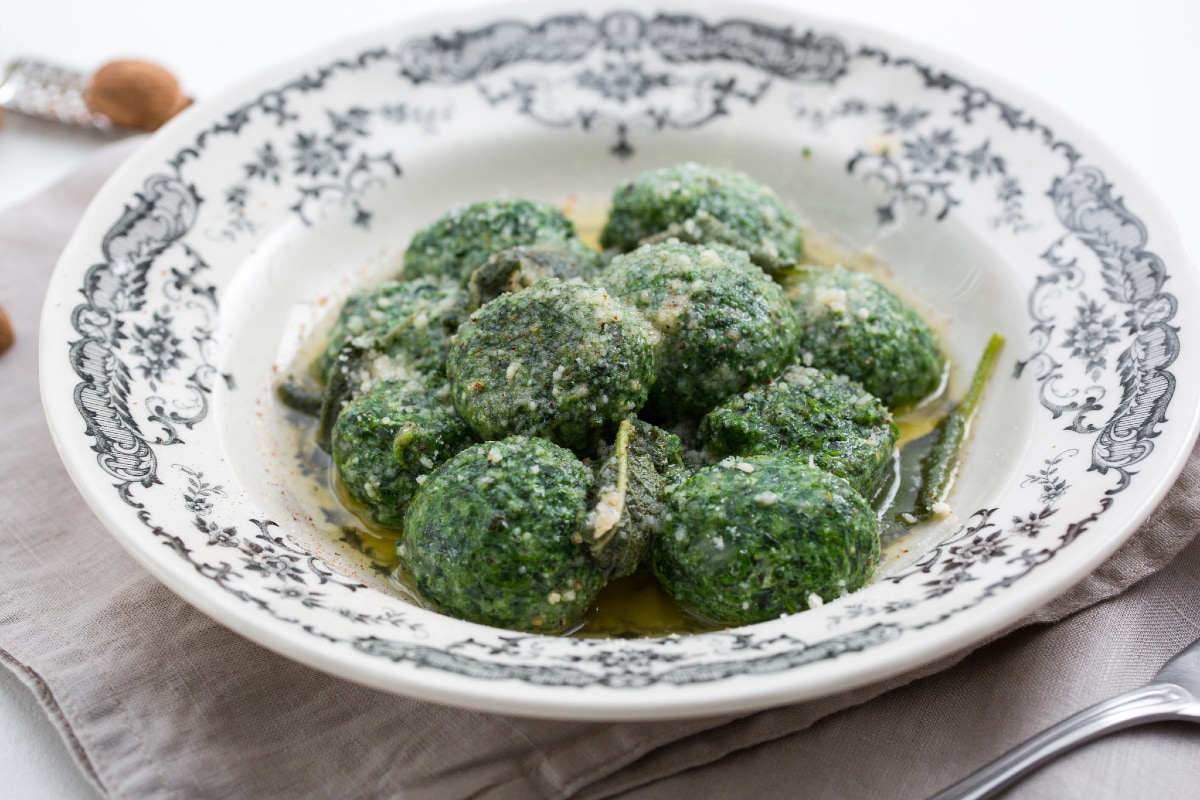Ricotta and spinach gnocchi
- Easy
- 40 min


Gnudi are a rustic and simple first course, typical of Tuscan cuisine. Tuscans, as we know, are substantial people and do everything their own way. Instead of mixing eggs and flour, rolling out the dough, filling and sealing it in the form of ravioli, one fine day who knows how long ago they must have said: why imprison this beautiful filling of ricotta and spinach in the pasta? Let's leave it free and... "beautifully naked"! Thus were born the gnudi: a first course of peasant tradition, typical of the regions of Maremma and Mugello, extraordinarily dedicated to sheep farming and good rustic, poor, and generous flavors. Gnudo, in the wonderful and expressive Tuscan language, literally means "nude": such is the filling of the Maremma tortello, which has become a substantial dumpling (in some cases quenelle) to be boiled in water as is, then seasoned with butter and sage, but delicately, so as not to melt it in the pan. Yes, because we said rustic, not rude! The gnudi, in their simplicity, are a dish that surprises with elegance and balance, and preparing them is an art that requires a delicate touch. Today we tell you how to prepare this exquisite Tuscan dish: follow our step-by-step version, and you will bring to your table the sincere taste of Maremma!
And if you loved this recipe with spinach, also try the black cabbage gnudi variant or discover these regional recipes:

To prepare the gnudi, first place the ricotta in a colander to remove the whey 1. In a pot, pour the previously washed spinach 2, cover with the lid 3 and wilt for 7-8 minutes over low heat.

Once cooked, transfer them to a colander 4 and let them cool, losing the liquid released during cooking 5. Squeeze them carefully 6.

Chop the spinach 7 and pour them into a bowl 8, add the well-drained sheep ricotta 9.

Season with salt, pepper, nutmeg 10, add the egg 11 and grated Parmigiano Reggiano PDO 12.

To better bind the mixture, add the flour 13 and mix carefully 14, for a homogeneous mixture. Take a small amount of dough, about 0.6-0.7 oz (18-20 g), form a slightly flattened ball, and place it on a tray 15.

Continue this way until the dough is finished and sprinkle the gnudi with a little flour 16. Place a pan full of water on the stove for cooking and bring it to a boil. Meanwhile, in a very large pan, melt the butter with the sage 17. Boil the gnudi in boiling water 18.

As the gnudi rise to the surface, drain them into the pan 19. Let them flavor by rotating the pan to avoid breaking them 20. Serve the gnudi hot with more grated Parmigiano 21.